#ocean pollution
Text

75 notes
·
View notes
Text
Millions of dead shrimp 🦐 off the coast of Yemen 🇾🇪 thanks to Iran, which intentionally sunk cargo ships carrying toxic chemicals, in the Red Sea.

#dead shrimp#shrimp#israel#secular-jew#jewish#judaism#israeli#jerusalem#diaspora#secular jew#secularjew#islam#red sea#pollution#ocean pollution#environmental disaster#environmentalist double standard
24 notes
·
View notes
Text
#amsterdam#good news#nature#science#environmentalism#climate change#cruisetravel#cruise ships#sustainability#environment#conservation#water pollution#pollution#ocean conservation#ocean pollution#ocean
67 notes
·
View notes
Text
'Fishing Plastic' - Fine Art Photography Self Portrait By Anya Anti

#fine art photography#anya anti#fishing plastic#photographers on tumblr#women photographers#female photographers#photography blog#photoblog#photo-art-lady#photography#self portraiture#self portrait#female artists#women artists#ecology#ecosystem#conservation#environment#plastic waste#ocean pollution
12 notes
·
View notes
Text
Same interests as always! 🌊🐬🦐
Worried about the oceans!
This Marine Biologist thanks you guys!

That's why Sam followed the Ocean Conservancy Instagram account...

As we know, Cait loves the beaches, the seas and the oceans... Cait, during the pandemic...


In early November, she retweeted some interesting posts...
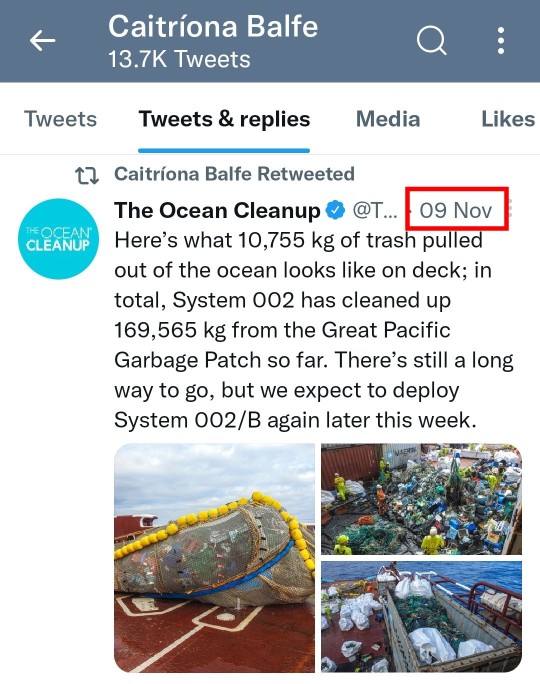

And I believe it was around this time that she followed this Twitter account... 🤷🏻♀️

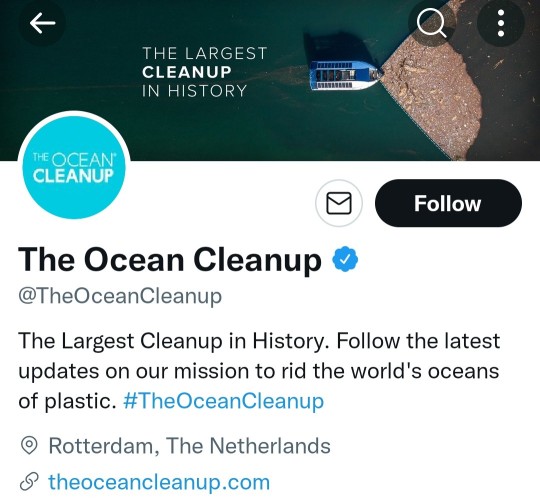
She has always been concerned about plastic pollution in the oceans...

They really support each other, in all matters!
🌊🐬🦐
#sam heughan#caitriona balfe#sam and caitriona#outlander#coincidences#ocean conservation#plastic pollution#ocean pollution
119 notes
·
View notes
Text
Please read!!!
You guys should really add Ocean Hero to your Google browser, i been using it for more than a year and is completely secure, real and it's free.
It has 5 stars and till now i never seen a bad opinion about it. You can always reserch about it on your own anyways.
For those who don't know, Ocean hero is a search engine that helps the enviorment fighting ocean pollution.
Here I am going to leave you the link of the page, where you can find all the information and add it to your Google. It doesn't really change anything (it doesn't even change the times, it takes less than 5 minutes to add it) and on the other hand, everything changes for our planet.
#oceanhero#help the earth#ocean pollution#earth pollution#viralpost#share this post#ocean#oceancore#ocean aesthetic#ocean help#ocean view#ocean hero
4 notes
·
View notes
Text

SAVE THE OCEAN
collage was made to make people aware of the pollution present in the ocean.
#ocean pollution#digital collage#collage art#spread awareness#pollution#turles#marine life#save the ocean#pagehum13#for you#please like and share#plastic#Do not use plastic#No plastic#Turtle#Collage#Aware#Sylvia Earle#ocean life#Ocean#Repost#Share
16 notes
·
View notes
Link
https://www.youtube.com/watch?v=6VMSQeeWvjo News for Kids at LNEnews - Veh's World - Ocean Pollution Help Save the Oceans #savetheoceans #kidsnews #Newsforkids #nevaehcable #vehsworld #littlenewsears #oceanpollution
7 notes
·
View notes
Text

The International Plastic Bag Free Day 2023 國際無塑膠日
HEY HUMAN, SEE WHAT YOU DO!?
ANIMAN - PLASTIC FISH
Instagram: milkdongcomics
Facebook: Milk DoNg Comics
#The International Plastic Bag Free Day#國際無塑膠日#Humphead Wrasse#Maori Wrasse#Napoleon Wrasse#曲紋唇魚#蘇眉魚#龍王鯛#拿破崙魚#Plastic Pollution#塑膠污染#Ocean Pollution#海洋污染#ANIMAN#HEY HUMAN SEE WHAT YOU DO!?#Milk DoNg#Milk DoNg Comics#Art#Drawing#Sketching#Painting#Illustration#Character Design#Color Pencil
2 notes
·
View notes
Note
(Ocean anon) yeah I’m hoping that the Atlantic is worse than the others currently (ok that sounds hideous but hear me out). The Atlantic is shallow, historically the worst polluted, and air currents dump a lot of global pollution specifically there. So it’s low in volume and high in particulate, therefore high in concentration, and stuff that settles out to the bottom of deeper oceans gets eddied up by the currents and returned to the upper levels of the ocean there. So hopefully just because it’s bad in the Atlantic, doesn’t mean the other oceans are that bad yet. But idk :/ as you said there’s more to uncover still
Here is the abstract of the paper and I want to highlight certain parts:
Marine plants and animals should be thriving in ocean waters because of the current high concentrations of carbon dioxide and nutrients along with slightly elevated temperatures - but they are not. We have lost 50% of all marine life over the last 70 years; this decline is continuing today at a rate of 1% year on year. The GOES team has used its collective professional and academic experience to undertake analysis of peer- reviewed and published data to explore the reasons for this decline and its implications for climate and humanity. In our view, this loss of marine life is directly related to the presence of toxic chemicals and plastic which started to appear with the ‘chemical revolution’ in the 1950’s.
There is no doubt that tiny ocean planktonic plants and animals are key to regulating our climate, but this keystone of the planet’s largest ecosystem seems to be ignored as one of the tools to address climate change. Every second breath we take comes from marine photosynthesis, a process which also uses 60-90% of our carbon dioxide. Now that we have lost 50% of a key climate regulator, surely it is time to stop, take a fresh look at ocean chemistry and biodiversity and ask ourselves some fundamental questions: Why have we lost this level of marine life? Why is the decline continuing? What does this mean for our climate and humanity?
Of particular concern from a climate change perspective is the level of carbonic acid in the oceans. This carbonic acid is created when atmospheric carbon dioxide dissolves into the oceans. In the 1940’s, ocean pH was 8.2, but in 2020, pH had dropped to 8.04, indicating that the oceans are becoming more acidic. If there are not enough plants to use up carbon, the unused carbonic acid moves the pH downwards. Reports from respected institutes around the globe flag an acceleration of the ocean acidification process. This decline will result in the loss of more marine plants and animals, especially those that have carbonate shells and body structures (aragonite) based. These same reports forecast that in 25 years (by 2045), pH will drop to 7.95, and estimate that with this, 80% to 90% of all remaining marine life will be lost. The GOES team’s opinion is that this is a tipping point: a planetary boundary which must not be exceeded if humanity is to survive. No ecosystem can survive a 90% loss; the result is a trophic cascade collapse. We will lose all the corals, whales, seals, birds, fish and food supply for 2 billion people – an outcome worse than climate change.
Let’s be clear: If by some miracle the world achieves net zero by 2045, evidence from the Intergovernmental Panel on Climate Change (IPCC) BIOACID report [1] demonstrates that this reduction will not be enough to stop a drop in ocean pH to 7.95. If the level of marine life (both plant and animal) is reduced, then the oceans’ ability to lockout carbon into the abyss is depleted. It is clear to the GOES team that if we only pursue carbon mitigation strategies and don’t do more to regenerate plant and animal life in oceans, we will reach a tipping point: a planetary boundary from which there will be no return, because all life on Earth depends upon the largest ecosystem on the planet. Humanity will suffer terribly from global warming, but it must be understood that the oceans are already showing signs of instability today at pH 8.04, (the start of the tipping point) and in 25 years when the pH has dropped to pH 7.95 represents the end point, the point of no return.
—
Very scary stuff—my hands are shaking as I type this. But they’ve identified the problem. And highlighted a solution. I am confident there are no shortage of solutions. Human ingenuity and nature …We just have to act and that often means regulations and direct action.
#climate collapse#ocean acidification#ocean pollution#plankton#ecological collapse#ocean preservation and conservation
18 notes
·
View notes
Text
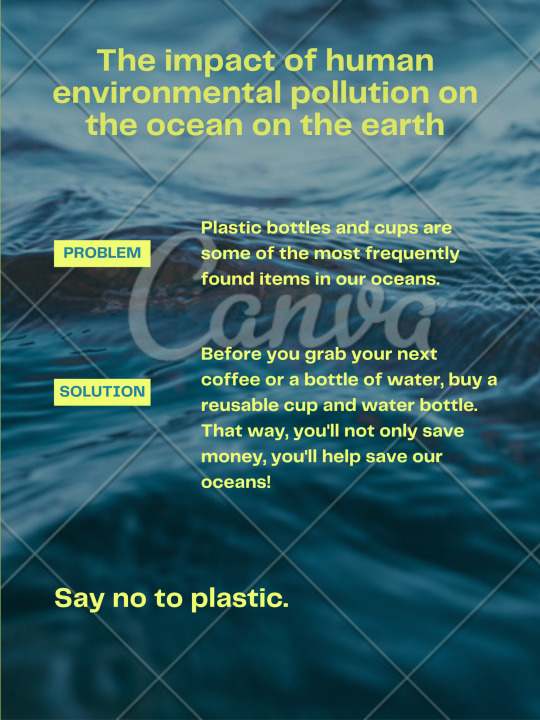



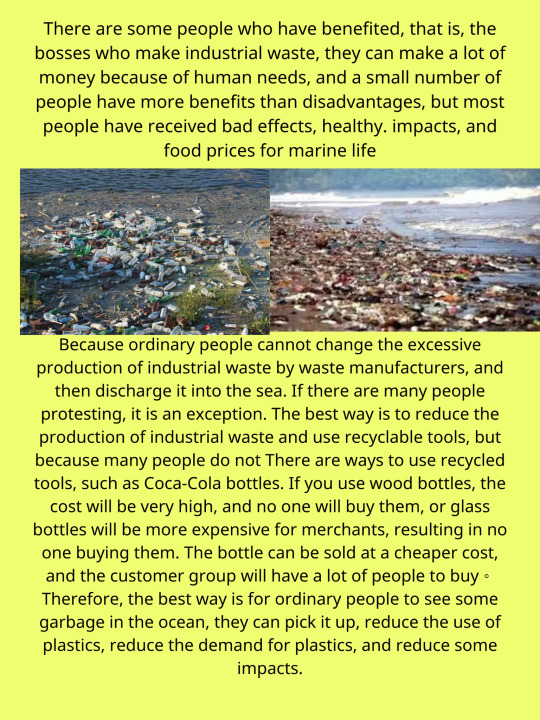
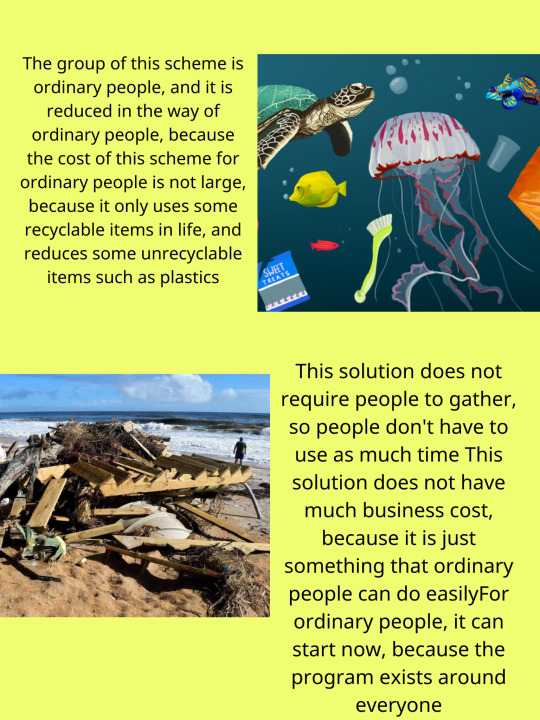

41 notes
·
View notes
Photo

Poisoned Tides
Commissions are open! info here
3 notes
·
View notes
Text
#good news#science#environmentalism#nature#environment#climate change#Ocean life#ocean pollution#icun#conservation#marine life#seas#oceans#save our seas
42 notes
·
View notes
Quote
Fashion is ranked as the second most polluting business in the world by the United Nations Conference on Trade and Development (UNCTD), right behind the oil industry. It takes 93 billion cubic metres of water annually, which is equivalent to 7,500 litres needed to create just one pair of pants. The amount of plastic microfibre that is dumped into the oceans each year is close to 500,000 tonnes. The poisonous colours produced in factories and the chemicals used in cotton growing are other aspects that highly contribute to polluting the environment. Water that is chemically contaminated kills organisms that are in or close to streams, therefore reducing ecological biodiversity in these regions. The chemicals used in dyeing have also been linked to a number of malignancies, digestive problems, and skin irritation, all of which have a detrimental effect on human health. When crops are irrigated with dirty water, contaminated vegetables and fruit enter the food chain, representing a huge threat to human health.
Lei Nguyen, ‘Sweatshops and Fast Fashion: The Human and Environmental Cost of Cheap Clothing’, Earth.org
#Earth.org#Lei Nguyen#Fashion industry#Fast Fashion#Sweatshops#Cheap Clothing#pollution#UNCTD#plastic microfibre#ocean pollution#dyeing#health effects
2 notes
·
View notes
Text
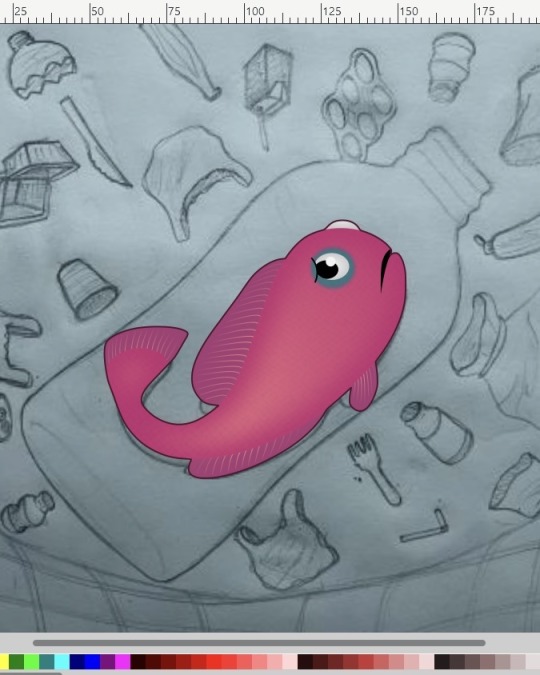
progress!
i might tweak the colors later if they look weird with the background, but i have to stay within my palette and for now i like it!
i used this fish as reference:
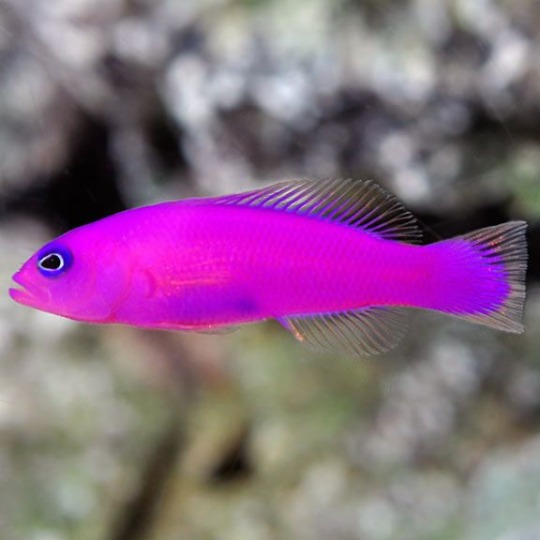
#sci art#science illustration#sci illustration#science#scienceblr#fish#pollution#ocean pollution#sciartober
4 notes
·
View notes
Text
How does waste end up in the ocean?


#ocean pollution#ocean conservation#dredging#dead zone#aquatic life#lobster#oil spill#runoff#awareness#polluted water#animals#health#saveourseas
3 notes
·
View notes